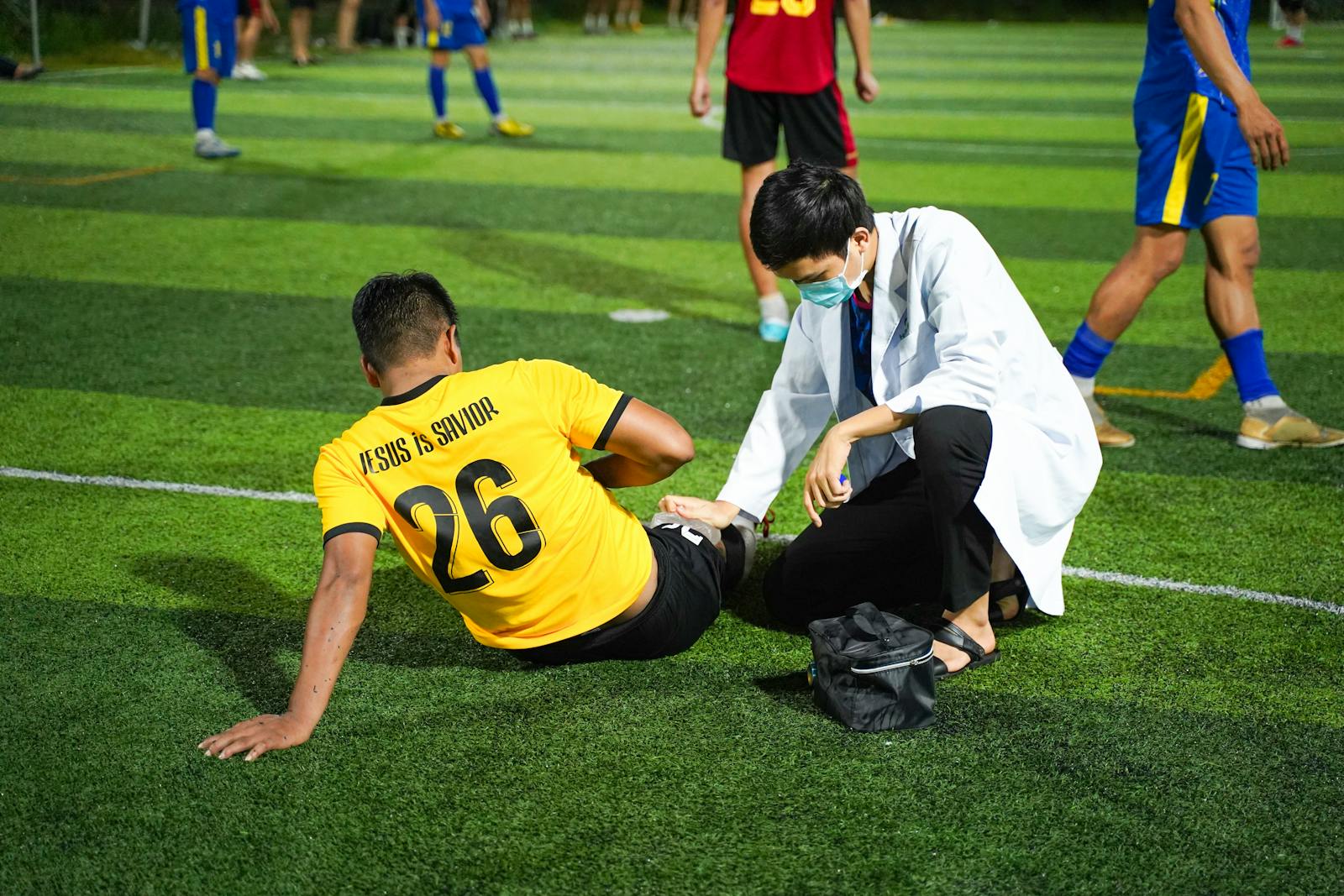Its important to adress myths and misconceptions aboout sports injuries to ensure proper understanding and prevention.while sports injuries are a common concern among athletes,its essential to seperate fact from fictions.
Let's debunk these myths
Playing through pain is normal and shows toughness
This is a dangerous myth that can lead to more severe injuries. Pain is your body's way of telling you that something is wrong. Ignoring pain and continuing to play can exacerbate the injury and prolong recovery time.Believing that playing through pain shows toughness can be harmful in several ways:
Worsening the injury: Pain is your body's way of signaling that something is wrong. By pushing through pain, you risk exacerbating the injury, making it more severe, and potentially prolonging your recovery time.
Compensating for the injury: When you play through pain, you may unconsciously alter your movements or use different muscle groups to compensate for the discomfort. This compensation can lead to additional strain on other parts of your body, increasing the risk of further injuries.
Long-term consequences: Ignoring pain in the short term might seem like a display of toughness, but it can lead to long-term damage and chronic conditions that may ultimately hinder your athletic performance or even force you to retire from the sport prematurelyRest is unnecessary; you should keep pushing yourself
Rest is a crucial component of the healing process. When you rest, your body can repair and regenerate tissues, which is essential for recovery. Pushing through an injury can worsen the condition and delay your return to sports.
This statement is not accurate and can be harmful if taken literally. Rest is an essential aspect of any athlete's training and performance regimen. While pushing yourself to improve and achieve your goals is vital, doing so without adequate rest can lead to negative consequences for your physical and mental well-being:
Overtraining and not allowing your body enough time to recover can lead to overuse injuries, muscle strains, and other physical ailments.eing.
Sports injuries only happen to amateurs or those not in good shape
Injuries can happen to anyone, regardless of their skill
level or fitness. Even professional athletes can suffer from injuries due to
the intense physical demands of their sport.
Several factors contribute to sports injuries, including
1:Intense physical demands
2:Overtraining
3:Accidents and collisions
4:Lack of proper warm-up and technique
You can heal any sports injury on your own
While minor injuries may improve with self-care, it's
essential to consult a healthcare professional for a proper diagnosis and
treatment plan. They can help you navigate the recovery process and prevent
further damage.
To promote growth and prevent sports injuries:
Warm-up properly: Always warm up before engaging in physical
activity to prepare your muscles and joints for the demands of your sport.
Conclusion
Always listen to your body, prioritize injury prevention, and consult a healthcare professional if you experience persistent pain or suspect an injury. A balanced approach to training, rest, and recovery is vital for long-term growth and performance.
The
topic of sports injuries is multifaceted and crucial for athletes, coaches, and
sports enthusiasts to understand.
What is the first aid treatment for sports injuries?
